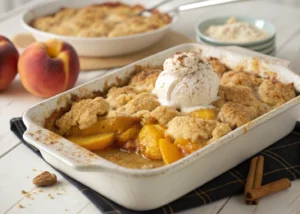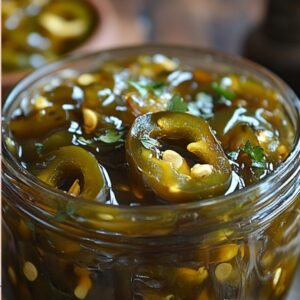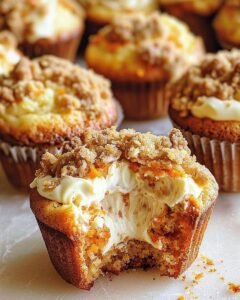
Indulge in the rich, deep flavors of a true baking classic with this Homemade German Chocolate Cake. This iconic dessert features layers of moist, tender chocolate cake, generously filled and topped with a luscious, creamy coconut-pecan frosting. It’s a symphony of textures and tastes, from the subtle sweetness of the cake to the irresistible chewiness of the frosting, making it a show-stopping centerpiece for any celebration or a comforting indulgence for a special treat. This recipe promises an authentic experience that will transport you straight to dessert heaven.
Why I Love This Recipe
German Chocolate Cake has always been a favorite of mine for its unique combination of flavors and textures. What truly captivates me about this homemade version is the depth of the chocolate flavor in the cake – it’s rich without being overly sweet, providing the perfect canvas for the star of the show: that incredible coconut-pecan frosting. I love the way the boiling water melts the chocolate, creating a smooth, deeply colored batter. And the frosting! It’s creamy, chewy, and bursting with toasted coconut and crunchy pecans. It’s a cake that feels substantial and celebratory, yet with these clear instructions, it’s a truly rewarding baking project that’s well worth the effort. It’s a classic for a reason, and making it from scratch elevates it to an unforgettable experience.
List of Ingredients
Here’s what you’ll need to create this magnificent Homemade German Chocolate Cake:
For the German Chocolate Cake:
- 1/2 cup boiling water
- 4 ounces sweet baking German chocolate, chopped (such as Baker’s German’s Sweet Chocolate)
- 2 cups granulated sugar
- 1 cup (2 sticks) unsalted butter, softened
- 4 large egg yolks, separated from whites
- 1 teaspoon vanilla extract
- 2 1/2 cups cake flour (or all-purpose flour, see notes)
- 1 teaspoon baking soda
- 1 teaspoon salt
- 1 cup buttermilk (room temperature)
- 4 large egg whites, stiffly beaten
For the Coconut Pecan Frosting:
- 1 cup granulated sugar
- 1/2 cup (1 stick) unsalted butter
- 1 cup evaporated milk
- 1 teaspoon vanilla extract
- 3 large egg yolks, lightly beaten
- 1 1/3 cups flaked coconut (sweetened or unsweetened, your preference)
- 1 cup chopped pecans, lightly toasted
Swaps and Notes
- German Sweet Chocolate: This specific type of chocolate is crucial for the authentic flavor profile of German chocolate cake. Do not substitute with unsweetened or semi-sweet chocolate unless you adjust the sugar content significantly.
- Cake Flour: Cake flour is recommended for a tender, fine crumb. If you don’t have cake flour, you can substitute it with all-purpose flour. For every 1 cup of cake flour, use 1 cup of all-purpose flour minus 2 tablespoons, then add 2 tablespoons of cornstarch to that all-purpose flour and whisk well before measuring for the recipe.
- Buttermilk: Room temperature buttermilk helps create a smoother batter. If you don’t have buttermilk, you can make a substitute by adding 1 tablespoon of white vinegar or lemon juice to a liquid measuring cup, then filling it to the 1-cup line with regular milk (whole or 2%). Let it sit for 5-10 minutes until it slightly curdles.
- Eggs (Cake): Separating the eggs and beating the whites stiffly adds lightness and tenderness to the cake. Ensure no yolk gets into the whites, or they won’t whip properly.
- Evaporated Milk (Frosting): This is essential for the unique texture and caramelization of the frosting. Do not substitute with regular milk.
- Coconut: Sweetened flaked coconut is typical, but unsweetened can be used if you prefer less sweetness.
- Pecans (Frosting): Lightly toasting the pecans before adding them to the frosting significantly enhances their nutty flavor and crunch. You can toast them in a dry skillet over medium heat for 3-5 minutes, stirring frequently, or spread on a baking sheet at 350∘F (175∘C) for 5-8 minutes.
- Butter (General): Use unsalted butter for both the cake and frosting to control the overall saltiness. Ensure butter and buttermilk are softened/at room temperature for the cake.
List of Steps for the Recipe
1. Prepare for Baking:
- Preheat your oven to 350∘F (175∘C).
- Generously grease and flour two 9-inch round cake pans (or three 8-inch round pans for taller layers, or two 9-inch square pans). Line the bottoms with parchment paper circles for easy release.
2. Prepare the Chocolate and Wet Ingredients for Cake:
- In a small heatproof bowl, pour 1/2 cup of boiling water over the 4 ounces of finely chopped sweet baking German chocolate. Stir constantly until the chocolate is completely melted and smooth. Let it cool to room temperature.
- In a large mixing bowl (using an electric mixer is recommended), cream together the 2 cups granulated sugar and 1 cup softened unsalted butter until the mixture is light, fluffy, and pale, about 3-5 minutes.
- Beat in the 4 egg yolks, one at a time, mixing well after each addition until fully incorporated.
- On low speed, beat in the cooled melted chocolate and 1 teaspoon vanilla extract until just combined. Scrape down the sides of the bowl as needed.
3. Prepare Dry and Final Cake Batter:
- In a separate medium bowl, whisk together the 2 1/2 cups cake flour (or prepared all-purpose flour substitute), 1 teaspoon baking soda, and 1 teaspoon salt.
- With the mixer on low speed, gradually add the dry ingredients to the wet mixture alternately with the 1 cup of buttermilk, beginning and ending with the dry ingredients. Beat after each addition until the batter is smooth and just combined. Be careful not to overmix.
- In a clean, dry bowl, beat the 4 egg whites with an electric mixer on high speed until stiff peaks form.
- Gently fold the stiffly beaten egg whites into the cake batter in three additions using a rubber spatula. Fold until just combined, being careful not to deflate the whites.
4. Bake the Cake Layers:
- Divide the cake batter evenly among the prepared cake pans.
- Bake for 40-45 minutes for 9-inch square pans, or 35-40 minutes for 8-inch round pans. Baking time may vary depending on your oven.
- The cake is done when a wooden toothpick inserted into the center comes out clean.
- Remove the cakes from the oven and let them cool in the pans on a wire rack for 10-15 minutes.
- After cooling slightly, carefully invert the cakes onto the wire rack, remove the parchment paper, and allow them to cool completely before frosting. This is crucial for the frosting to adhere properly and not melt.
5. Make the Coconut Pecan Frosting:
- In a medium saucepan, combine 1 cup granulated sugar, 1/2 cup unsalted butter, 1 cup evaporated milk, 1 teaspoon vanilla extract, and 3 lightly beaten egg yolks.
- Cook the mixture over medium heat, stirring constantly with a whisk or wooden spoon, until it thickens to a pudding-like consistency. This usually takes about 10-15 minutes. It should be thick enough to coat the back of a spoon. Do not let it boil vigorously.
- Remove the saucepan from the heat. Stir in the 1 1/3 cups flaked coconut and 1 cup chopped toasted pecans until well combined.
- Allow the frosting to cool slightly and thicken to a spreadable consistency. It will continue to thicken as it cools. You may need to stir it occasionally as it cools.
6. Assemble and Frost the Cake:
- Once the cake layers are completely cooled, place one cake layer on your serving plate or cake stand.
- Spread about one-third of the Coconut Pecan Frosting evenly over the top of the first layer.
- Carefully place the second cake layer on top. Repeat with another third of the frosting. If using three layers, repeat once more.
- Spread the remaining frosting generously over the top and sides of the cake. The classic German chocolate cake often leaves the sides partially bare to show the layers, or you can fully coat them.
7. Chill (Optional) and Serve:
- For best results, lightly chill the frosted cake for at least 30 minutes to allow the frosting to set slightly.
- Slice and serve this magnificent Homemade German Chocolate Cake.
Tips for Success
- Room Temperature Ingredients: Ensure butter, eggs, and buttermilk are at room temperature. This helps create a smooth batter and a tender crumb.
- No Yolk in Whites: Even a tiny bit of egg yolk can prevent egg whites from whipping to stiff peaks. Use a very clean, dry bowl and whisk.
- Melt Chocolate Completely: Ensure the chocolate is fully melted and smooth with the boiling water before adding to the batter.
- Do Not Overmix: Overmixing the cake batter will develop gluten, resulting in a tough cake. Mix until just combined.
- Cool Cakes Completely: This is crucial. If the cake layers are even slightly warm, the frosting will melt and slide off.
- Constant Stirring for Frosting: Stirring the frosting mixture constantly over medium heat prevents scorching and ensures a smooth, thick consistency. Don’t stop stirring!
- Frosting Consistency: The frosting will thicken significantly as it cools. If it becomes too stiff, you can gently warm it over very low heat (or a double boiler) for a few seconds, stirring constantly, to soften it slightly.
Serving Suggestions and Pairings
Homemade German Chocolate Cake is a decadent dessert on its own, but here are some ideas to enhance the experience:
- Coffee or Espresso: The richness of the cake pairs wonderfully with a strong cup of coffee or an espresso.
- Milk: A cold glass of milk provides a classic, simple contrast.
- Vanilla Ice Cream: A small scoop of vanilla bean ice cream could add a creamy, cool element.
- Chocolate Sauce Drizzle: For the ultimate chocolate lover, a light drizzle of chocolate sauce on the plate.
- Holiday or Celebration: This cake is perfect for birthdays, anniversaries, or any special occasion where you want an impressive, homemade dessert.
Nutritional Information
(Approximation per serving, based on 12-16 servings. Values can vary significantly based on exact ingredients and portion sizes.)
- Calories: Approximately 550-700 kcal
- Protein: Approximately 7-10 g
- Fat: Approximately 35-45 g (with 20-25 g saturated fat)
- Carbohydrates: Approximately 70-85 g
- Fiber: Approximately 3-5 g
- Sodium: Approximately 300-400 mg
- Cholesterol: Approximately 150-200 mg
Note: These values are estimates. For precise nutritional information, it’s recommended to use a nutritional calculator with your specific ingredients and exact portion sizes.
Storage and Leftover Tips
- Refrigeration: German Chocolate Cake with its custard-based frosting must be stored in the refrigerator. Cover it loosely with plastic wrap or a cake dome. It will stay fresh for up to 3-4 days.
- Bringing to Room Temperature: For best flavor and texture, remove the cake from the refrigerator about 30 minutes to an hour before serving to allow the cake and frosting to soften slightly.
- Freezing (Unfrosted Layers): The unfrosted cake layers freeze beautifully. Once completely cooled, wrap each layer tightly in plastic wrap, then in aluminum foil. Freeze for up to 2-3 months. Thaw overnight in the refrigerator before frosting.
- Freezing (Frosted Cake): You can freeze the whole frosted cake or individual slices. Freeze the cake (uncovered) until the frosting is solid, then wrap tightly in plastic wrap and then foil. Freeze for up to 1 month. Thaw overnight in the refrigerator. The texture of the frosting might be slightly different upon thawing but will still be delicious.
Final Thoughts
This Homemade German Chocolate Cake is a labor of love that is incredibly rewarding. It’s a dessert that speaks of tradition, celebration, and the pure joy of a rich, satisfying slice of cake. The layers of moist chocolate and the signature creamy, nutty frosting create an unforgettable experience that will leave everyone asking for another slice. Embrace the challenge, and enjoy the delicious results!
We’d love to hear how your Homemade German Chocolate Cake turned out! Share your baking triumphs or any cherished memories associated with this classic dessert in the comments below. Don’t forget to follow us for more delicious recipes and culinary inspiration!




Leave a Reply